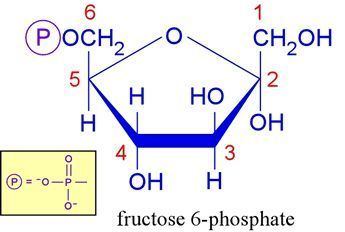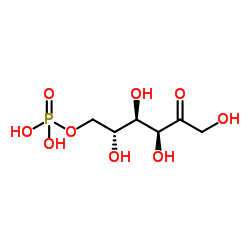Abbreviations F6P Molar mass 259.81 g/mol | Formula C6H13O9P | |
Fructose 6-phosphate (sometimes called the Neuberg ester) is a fructose sugar phosphorylated on carbon 6 (i.e., is a fructosephosphate). The β--form of this compound is very common in cells. The vast majority of glucose and fructose entering a cell will become converted to this at some point. The name Neuberg ester comes from the German biochemist Carl Neuberg.
Contents

History

In 1918, Carl Neuberg found that the compound (only later identified as fructose 6-phosphate) could be produced by mild acid hydrolysis of fructose 2,6-bisphosphate.
Fructose 6-phosphate in glycolysis

Fructose 6-phosphate lies within the glycolysis metabolic pathway and is produced by isomerisation of glucose 6-phosphate. It is in turn further phosphorylated to fructose-1,6-bisphosphate.
Compound C00668 at KEGG Pathway Database. Enzyme 5.3.1.9 at KEGG Pathway Database. Compound C05345 at KEGG Pathway Database. Enzyme 2.7.1.11 at KEGG Pathway Database. Enzyme 3.1.3.11 at KEGG Pathway Database. Reaction [1] at KEGG Pathway Database. Compound C05378 at KEGG Pathway Database.
Click on genes, proteins and metabolites below to link to respective articles.
